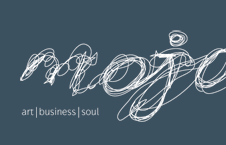TRIANGLE






TAYSEER BARAKAT | ISMAIL AL RIFAI | MISHECK
From Palestine, Zimbabwe and Syria, faces emerge and meet in expressive forms filled with sadness, defiance, scorn, questions and at times cries. Faces and figures searching the surreal sky stormy with gunpowder for a sense of freedom. A moment of respite from injustice in a world shaped by the lust for power, tormented by repression and human indifference.
Three remarkable and unique points-of-view shaped and touched by first hand experiences. Yet all united by the enduring human spirit to pursue an existence lived with simple dignity.
The distinctive work of Zimbabwe based contemporary artist Misheck Masamvu reflects rich and fascinating influences. Kokoschka, Munch and German Expressionism come to mind. It’s as if times of turmoil possess their own artistic language imploring the artist to speak the improbable and materialise the unimaginable.
With complex disfigurements borne of conflict merging with moments of transformation, Masamvu achieves a special balance between expressive emotional detail and extreme briefness of treatment. As if we stand facing a silent cry. He merges man and woman in one being, carves many heads for a single body and calls on various forms reminiscent of African masks to announce his belonging to his land, his culture, his home. Strong, vibrant and expressive colour is particular to Masamvu’s work as if declaring the arrival of some future joy out of the destruction. His are the colours of a long awaited liberty.
Born in an occupied land amidst large scale wars, intermittent skirmishes and endless violations, Tayseer Barakat fears for his home. Barakat has lived from Jabalieh to Ramallah, from Khayyam to Alexandria. A life of permanent displacement and uncertainty.
Through the layers of his work, Barakat extracts a reality we feel we have experienced. The perpetual song of freedom that has played for thousands of years. The faces, figures and symbols of Barakat’s pieces are naive and innocent, even those of the soldiers and tanks, they all carry an element of childhood in their form. A visual contradiction that manages to be both minimal and complex, beautiful and haunting, contemporary and timeless.
The large monochromatic faces of Ismail Al Rifai remain at the centre of his artistic journey. The weeping mother, the sad sibling, the lover, the friend, all his faces reflect our collective conscious and the turmoil of our times.
Al Rifai knows his loved ones are present in every detail, witness to humanity at its worst. The blue greys of his palette dominate the surface of his work and capture the smoke of conflict. Layers and time are used by Al Rifai to form immortal icons, observers to all that is happening in the region. We feel the artist’s longing for his homeland, his family and his belief in humanity.
This exhibition forms the third part of the Crossings series connecting contemporary artists from Africa with artists from the Arabic world.
© Copyright The Mojo Gallery | www.mojohq.com







